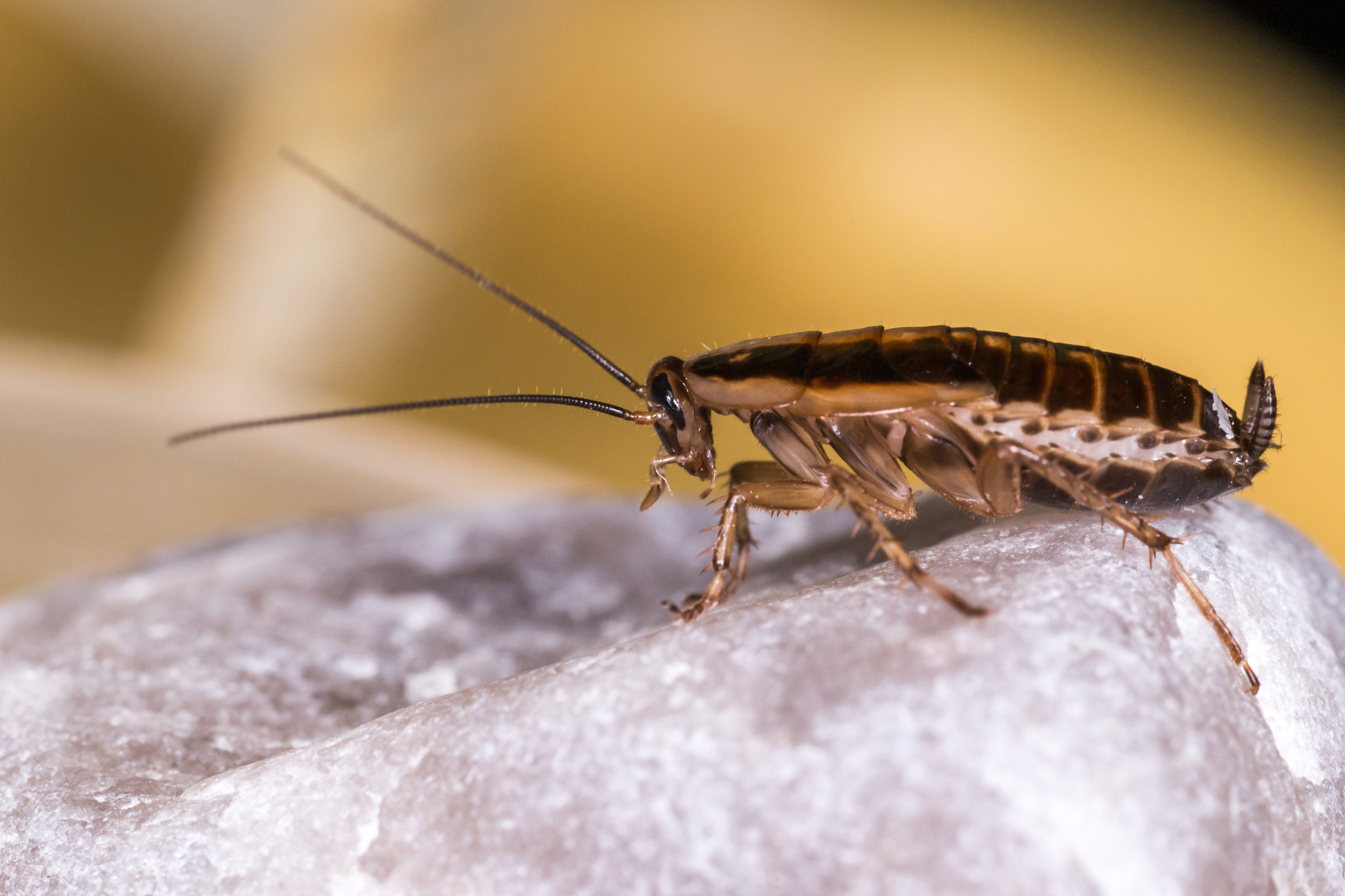German Cockroach (Blattella germanica) Overview
The German cockroach (Blattella germanica) is one of the most common household pests worldwide. Known for its resilience and rapid reproduction, it thrives in human environments, particularly in warm, humid places such as kitchens and bathrooms.
General Information:
- Scientific Name: Blattella germanica
- Common Names: German cockroach, kitchen cockroach
- Family: Ectobiidae (formerly Blattellidae)
- Size:
- Length: 13–16 mm (0.5–0.6 inches)
- Color: Light brown to tan with two dark parallel stripes on the pronotum (the plate behind the head)
- Lifespan: Approximately 100–200 days
Distribution & Habitat:
- Found worldwide, particularly in human dwellings
- Prefers warm, humid environments (kitchens, bathrooms, restaurants, hospitals)
- Primarily nocturnal, hiding in cracks and crevices during the day
Reproduction & Lifecycle:
- Eggs: Carried in an egg case (ootheca), containing about 30–40 eggs
- Nymphs: Hatch in 1–2 months and undergo multiple molts before reaching adulthood
- Reproduction Rate: A single female can produce over 30,000 offspring per year under optimal conditions
Behavior & Diet:
- Omnivorous: Eats food scraps, grease, glue, soap, and even book bindings
- Rapid reproduction and adaptability make them difficult to control
- Scavengers: Can survive without food for up to a month but need water frequently
Health Risks & Problems:
- Disease Transmission: Can carry bacteria such as Salmonella and E. coli, spreading contamination
- Allergens: Their shed skin, feces, and saliva can trigger asthma and allergies
- Difficult to Eradicate: High resistance to pesticides and ability to develop resistance quickly
Control & Prevention:
- Sanitation: Keep areas clean, remove food crumbs, and eliminate water sources
- Sealing Entry Points: Close cracks, crevices, and gaps in walls or around pipes
- Traps & Baits: Gel baits and bait stations can help reduce populations
- Insecticides & Growth Regulators: Target nymphs and reproductive cycles
- Professional Pest Control: Necessary for severe infestations
Interesting Facts:
- Can survive without a head for up to a week, eventually dying from dehydration
- One of the fastest reproducing cockroach species
- They prefer high humidity and temperatures above 70°F (21°C)
Would you like information on specific control methods or behavioral studies?
Visited 838 times, 20 visit(s) today
Views: 1548
Subscribe to the newsletter:
